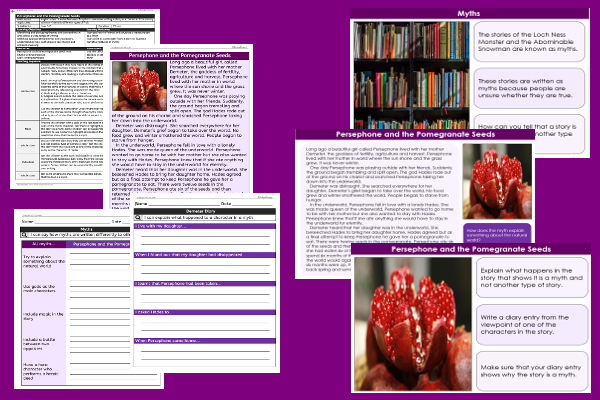Persephone and the Pomegranate Seeds

This English teaching pack for Key Stage Two gets the children to explore how to identify and describe the main narrative features of myths to use when writing a diary as a character from a story set in Ancient Greece.
The class can explain how to structure and format their writing to match the narrative text features of myths to indicate the sequence of events and the dilemmas faced by the characters.
Download this teaching pack including a lesson plan, classroom activities and an interactive presentation to identify and describe the main narrative features of myths to use when writing a diary as a character from a story set in Ancient Greece
Activities in this teaching pack include a shared reading text to explain how to structure and format a myth based on the culture of Ancient Greece, a worksheet to identify and record parts of a story from Ancient Greece that can identify the narrative as a myth and a template to write a diary entry as a character from a myth set in Ancient Greece.
The interactive presentation gets the children to explore and describe the features of myths to use when writing a diary as a character from a story.
This lesson is part of an English scheme of work to get the children to practise composing narrative stories to illustrate the structure and format of myths based on culture and traditions from Ancient Greece. There are teaching activities for shared learning, differentiated worksheets to support independent learning and interactive presentations to introduce concepts and key skills.
-

Determinant Lists
Explain and model how to make lists of objects used and found in different locations to match the correct determinants of a and an
-

English SPAG Assessment
Assess abilities in composing sentences for fiction and non-fiction using the correct spellings, punctuation marks and grammar vocabulary phrases
-

Maths Arithmetic Assessment
Assess abilities in solving arithmetic number problems for addition, subtraction, multiplication and division when working with informal and formal written calculations
-

Environment
Identify and describe some of the special landscapes and locations that can be found in the world and reflect on how they can be protected and preserved for the future
